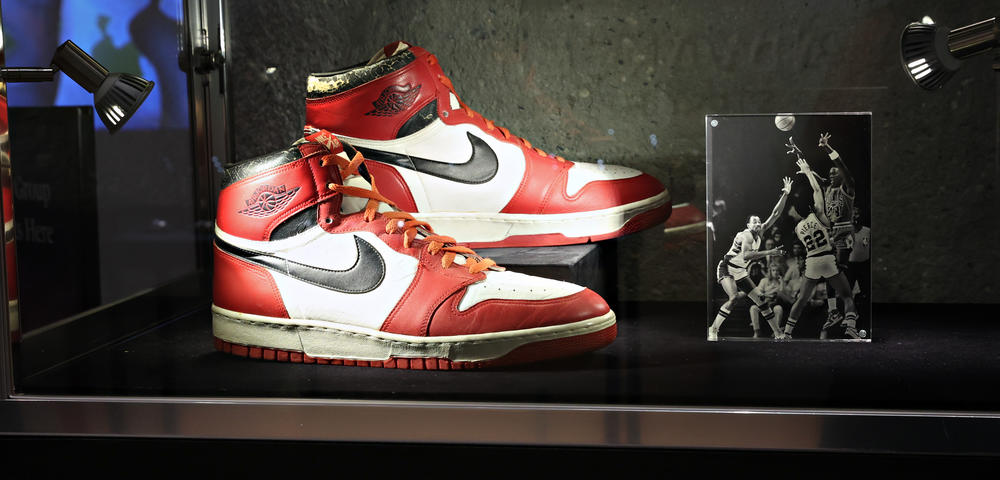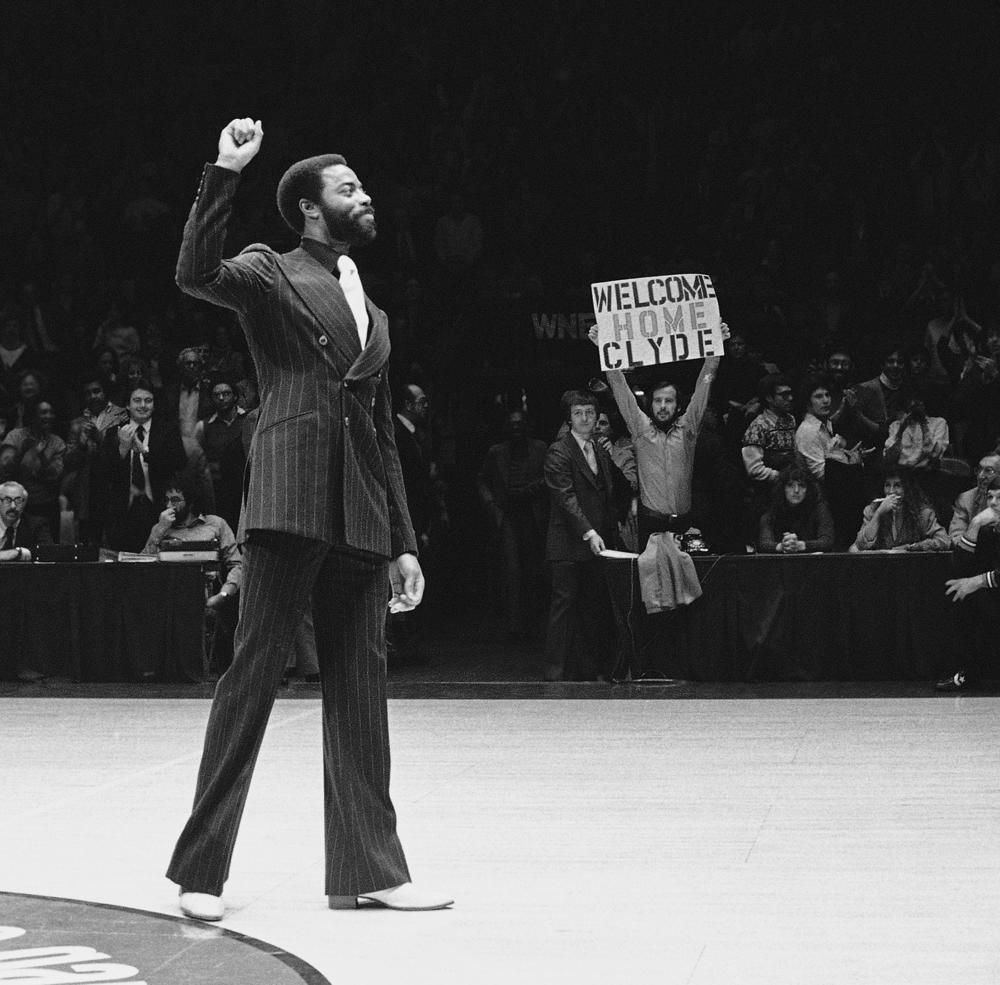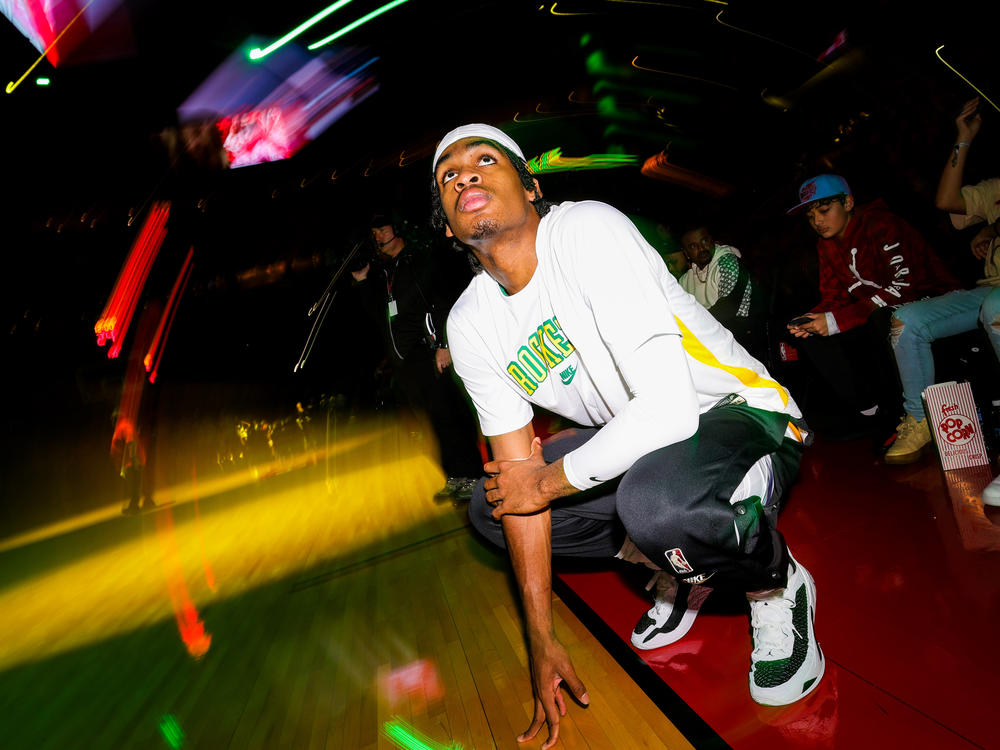Section Branding
Header Content
With NBA playoffs underway, players are showing off their talents — and their style
Primary Content
NBA style guru Lance Fresh was ahead of the game when it came to taking what players wore beyond the court. "We gotta talk about what the guys are wearing coming to the game ... " he explains. "That's what they really wanted to talk about. They didn't want to talk about having a bad game or shooting two for 10."
The NBA playoffs are underway and players are doing more than just hooping; they are stunting in fresh fits, using fashion as an outlet for them to express themselves – representing their roots and influencing culture beyond the court.
"I always say that your style ... is almost like your mouthpiece to the world," Fresh says. Athletes are looking to build their own brand. "I think with these athletes they're understanding they're jumping into the NBA. ... You're a business ... if you represent yourself the right way – and we've seen that not just with the stars – we've seen guys who barely get any playing time get a lot of camera time before the game or get the shoe deals or the brand deals."
It all began with the kicks. In 1971 the first signature sneaker, the Puma "Clyde" was released, as in New York Knicks legend Walt "Clyde" Frazier. In 1985, Nike dropped the most pervasive shoe in sneaker culture, the Air Jordan. The importance of this cultural moment goes beyond sports and fashion. Jordans were the shoes you could wear on and off the court. It disrupted the line between form and function. It also had a huge impact on athletes' representation. It solidified a legacy: "Dream It. Do It."
But players haven't always been allowed to express and represent themselves through their kicks and fits. Before athletes were rocking runways and starting their own clothing brands, the NBA had a dress code, requiring players to wear business or conservative attire before and after games. No chains, shorts, or T-shirts. Some players, like Jason Richardson, called the code racist.
The dress code was put in place in 2005. NBA commissioner David Stern wanted to bring back the Walt "Clyde" Frazier look – he was known for stunting in super fly suits.
Allen Iverson, at the time with the Philadelphia 76ers, didn't fit the image with his cornrows and oversized shorts. "He's the guy who single-handedly challenged it, and they literally had to create the dress code because of him," Fresh explains.
Josh Christopher, a 21-year-old basketball player for the Houston Rockets, is just one example of an NBA athlete who is embracing the creative intersection of sports and fashion.
"I put on a outfit for the Brooklyn game, and I just saw a kid tag me in a photo of him trying to kind of mimic my outfit. ... Somebody might not be in the NBA or play basketball, but like when you get fly and you put on clothes, people gonna rock with you just because they have that love for fashion, too," says Christopher.
Christopher grew up wearing Vans, Kobe's on concrete, cut-off sweats, white tees, and baby shorts. Cali vibes through and through. "I just always found clothes to be as like a way to express myself," Christopher says.
His swag is inspired by former NBA player Nick Young AKA Swaggy P. "I would dye my hair, and I even twisted my hair up — and when he cut his hair I would cut mine, too," Christopher says. As a kid who grew up in suburban Lancaster, Calif., attending private school, Christopher identified with Swaggy P's skater style.
Christopher is part of a continued NBA fashion legacy. While he has built his own brand, he is also a Jordan brand athlete. "For me and my deal and for the brand was for me to be myself," Christopher says. "But at the same time, throw some Js on it with it too ... Keep the Js alive."
Christopher also draws inspiration from his dad and his brother, Pat (who also played for the NBA and is now a designer). They got him hip to the business and art of it. He first started building his personal brand when he wasn't allowed to profit off his image as an athlete – this was before the NCAA's NIL (Name, Image, Likeness) policy. Other brands like Russell Westbrook's Honor the Gift are fueled by aspiration and are invested in their communities.
Fresh sees Westbrook as a trailblazer. The profits from some Honor the Gift drops go toward supporting local causes. Their latest collection draws inspiration from Black history and features modern-day Black equestrians the Compton Cowboys.
"The attention to detail and the dedication to his neighborhood, to where he comes from in LA ... if you can still hold onto some of that home ... and take that with you in fashion. I think that's amazing," Fresh says.
In 2020 during the peak of the Black Lives Matter movement, brands were positioning themselves within a social justice framework. Some were concerned that it was performative.
"We've seen a lot of brands, jumping back into, representing. Whether it's race, ethnicity, gender, and things like that," Fresh says. "I think they've been doing a great job of being more inclusive. I would want them to continue just to keep that ... same energy, keep that same 2020 energy that you had where it was like, I wanna support, I wanna be a part of it because it just makes sense. Don't tell me; show me."
Fresh says it's not just corporate obligation – athletes play a major role in raising community issues via their brands. "When you can really do things for the communities that support you and that ultimately build your brand, I think it's also a responsibility of the athletes, too ..." Fresh says. "When you're signing up for that shoe deal and your commitment, you say, 'Hey, listen, I need a court done in my neighborhood ... I need this support. I wanna do these mentorships.' Some people don't wanna do media and things like that, but no matter what, you have a kid that's looking up to you that wants to be like you."
Athletes like Christopher feel that responsibility. From sneakers to suits, whether it's in the arena tunnel or on the runway, players are putting it on not only for themselves but also for their communities.
"I feel like we should like, make it our duty as athletes to push our peoples forward with their stuff, too," he says.
Copyright 2023 NPR. To see more, visit https://www.npr.org.




